 In several cases rock art manufacturers were intrigued by natural rock features such as holes and cracks. This paper deals mainly with rock art images of masks that are folded across two rock panels creating 3D masks. In particular the Mogollon 3D masks of Three Rivers in New Mexico, USA, will be discussed. Also the puzzling anomaly regarding the distribution of Mogollon 3D masks and Rio Grande Style 3D masks will be dealt with. Finally, it will be attempted to offer an explanation for the enigmatic 3D masks (PDF available).
In several cases rock art manufacturers were intrigued by natural rock features such as holes and cracks. This paper deals mainly with rock art images of masks that are folded across two rock panels creating 3D masks. In particular the Mogollon 3D masks of Three Rivers in New Mexico, USA, will be discussed. Also the puzzling anomaly regarding the distribution of Mogollon 3D masks and Rio Grande Style 3D masks will be dealt with. Finally, it will be attempted to offer an explanation for the enigmatic 3D masks (PDF available).
By Maarten van Hoek
![]() TRACCE Online Rock Art Bulletin
TRACCE Online Rock Art Bulletin
#46, October 2020
*
*
*
Rock Art Images Wrapped Around the Corner
The Three Rivers 3D Masks
by
Maarten van Hoek
rockart@home.nl
*
*
open full-res PDF (38 MB)
open low-res PDF (2.5 MB)
ACKNOWLEDGEMENTS
This study could never have been realised without the much appreciated help of several people. First of all I would like to express my gratitude to Mrs. Mary Russell of the El Paso Archaeological Society, not only for guiding us to Three Rivers and Hueco Tanks in 2005, but also for her great hospitality and assistance during our stay in El Paso. While visiting the El Paso Museum of Archaeology she also shared very useful information with us. Of enormous help was the assistance by Ken Steiner, who – in 2007 – kindly sent me a DVD with altogether more than 17.000 photos of New Mexico rock art sites, 4450 of which concerned photos of Three Rivers. Many of his photos proved to be very useful and illustrative for this study and therefore several of his photos have been used in this study with his kind permission. I also am grateful to Bob Dragon for accompanying us at our trips to Three Rivers and for sending me his 134 photos made at those surveys and allowing me to use his pictures. Four of his photos have been used in this study. As ever Dennis Slifer kindly permitted me to use his material. One of his photos has been used in this study. I also would like to thank Mrs. Margaret Berrier for providing some useful information. Also appreciated was the information/photograph kindly shared with me by Dr. Dennis DeVore of the Utah Rock Art Research Association (URARA). It concerns the entry: Galisteo Basin, which was used to update the statistics (Appendix). Regarding our survey at Palamenco, Peru, we are grateful to archaeologist Dr. Lorenzo Samaniego Román of the National University of Santa, Chimbote, for his expert guidance. Last, but certainly not least, I thank my wife Elles who – as usual – assisted me during the surveys at Three Rivers and continued to support me at home.
*
A PDF of this article is available for download at the Patina web page of the Utah Rock Art Research Association (URARA). However, the current publication in TRACCE (and the PDF that in due time will be available at ResearchGate) concerns a slightly updated version regarding the statistics (see the Appendix), while also some minor corrections were made.
INTRODUCTION
Rock art images comprise petroglyphs (images pecked or hacked into a natural stone surface) and pictographs (images painted onto the rock surface). In general those images are two-dimensional (2D in this study). The fact that many petroglyphs have a considerable depth will be ignored here and such petroglyphs will still be regarded as 2D. For instance, several three-dimensional-looking petroglyphs of the so-called “birdmen” on Rapa Nui are not considered to be three-dimensional (3D in this study). In general this study investigates the use of the 3D character of the rock in order to intentionally create 3D-looking rock art images. Also considered are images that intentionally use two panels to create a “3D-scene”. It must be realised however that in most (if not all) instances only the canvas is 3D, while the rock art image(s) in fact remain 2D.
In general the panel on which the rock art images have been manufactured is mainly 2D, even when uneven. Thus a perfect 2D panel is perfectly smooth and flat (even when concave or convex). However, in reality many rock panels are uneven and may be regarded to comprise (many) smaller panels that are facing in various directions (but often only gently sloping). Importantly, in this study two panels need not meet at a 90 degrees angle; much lower values are often sufficient to separate two joined images or two halves of an image.
There are many instances, whether on an outcrop or a boulder, where rock art images have been manufactured onto a 3D stone surface with all the images clearly separated on two or more adjacent panels thus without any overlapping. In most instances the rock art images are then confined to the separate panels and thus also the images remain separate. In several cases however a petroglyph has partially been manufactured folded across two panels that face in different directions. Yet, in most cases there is no question of intentionally using the 3D character of the stone. For instance, the tail of the zoomorphic petroglyph in Figure 1 has been manufactured on Panel B without – in my opinion – a special reason. It just happened to result this way (whether the 3D character of the rock is revealed also depends on the angle of sunlight).
Click any illustration to view an enlargement.
In order to more clearly illustrate the subject of this study, one major petroglyph site will be discussed in detail (realising that there no doubt will be more rock art sites across the world where the 3D-effect will occur). It concerns Three Rivers in New Mexico, USA, which was surveyed by us twice in 2005, expertly guided by Mary Russell of the El Paso Archaeological Society and Bob Dragon (Figure 2).
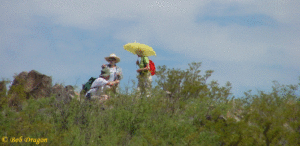
Figure 2: The author, his wife (with umbrella) and Mary Russell at Three Rivers, New Mexico. Photograph © by Bob Dragon
The site comprises a conspicuous, long rocky ridge (roughly 1700 m from north to south) and a few outlying outcrop knolls in an otherwise flat landscape, offering wide views towards the distant mountains east and west. Numerous boulders and outcrops are decorated with petroglyphs ranging from very simple abstract motifs to most complex abstract patterns and biomorphic figures. Occasionally the 3D petroglyphs of Three Rivers will be compared with similar – yet completely different – 3D petroglyphs at other sites, for instance Palamenco, a major site in the coastal desert of northern Peru, which was surveyed by us in 2008. At Palamenco only boulders occur (we recorded 191 boulders with petroglyphs) that are found in a string of gullies with very limited views. The two sites are roughly 5500 km apart and are culturally completely separated as well as chronologically far apart. Palamenco rock art dates as far back as 3000 to 4000 years, while Three Rivers rock art dates from the Jornada Mogollon era (roughly dated A.D. 1000 to1400). Importantly, the Mogollon should not be considered to form one uniform society, but rather as several different groups with similar cultural expressions.
*
Problems in Recording
In the field the distinction between two rock panels is sometimes hard to see. There are several reasons. Firstly, it makes a huge difference if some-one observes a rock art image in overcast weather or whether the sun is shining. A fine example is the mask petroglyph photographed twice by Ken Steiner at Three Rivers (Figure 3). Photo A was taken without sunlight and does not show the 3D character of the outcrop stack, while photo B of the same stack clearly shows the 3D character of the mask. However, if the sun was shining perpendicularly on the image, the 3D character would also have largely been lost (but not always).
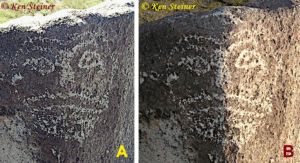
Figure 3: Mask petroglyph from Three Rivers. Photographs © by Ken Steiner (A: photo: S0004812; B: photo S0017601)
But even when the sun is out (or not), it makes a huge difference from what angle the photograph was made. There are even petroglyphs that only become visible when the sun is reflected in a specific way. Another fine example is a mask petroglyph from La Cieneguilla in northern New Mexico (260 km north of Three Rivers). When viewed from above or slightly from the left, the image appears to depict only the left part of the mask (Figure 4). Only when viewed at an angle from the right the full mask images becomes evident (Figure 4: inset). However, even a stark shadow created on a panel by a nearby boulder may give the impression that two panels have been photographed.
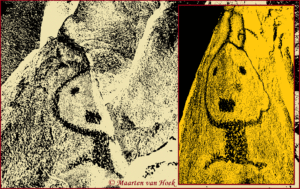
Figure 4: Petroglyph from La Cieneguilla. Drawings © by Maarten van Hoek, based on photographs by Michael Radford (in Facebook)
Thirdly, quite often a panel is convex and if one part of the image is manufactured on one sloping part it is hard to see where one panel ends and the other begins. A fine instance is the petroglyph of the head of a long-beaked bird at Three Rivers (Figure 5). A small part of the head sits on a smaller, slightly sloping panel to the left of the eye. Yet I am convinced that the position of the whole petroglyph is not a matter of coincidence. It is highly likely that the eye element was executed first, as the place to draw the eye was obviously determined by a small, white natural projection of stone on the boulder, intentionally selected by the manufacturer to depict the pupil and to start the petroglyph. Another zoomorphic petroglyph at Three Rivers has a similar small natural projection serving as an eye.
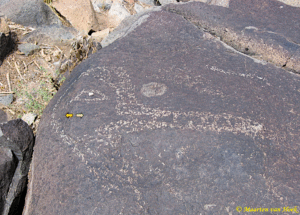
Figure 5: Petroglyph of a long-beaked bird’s head from Three Rivers, New Mexico. Photograph © by Maarten van Hoek
Importantly, the statistical results presented in this study only represent the very minimum of 3D masks recorded in New Mexico rock art. Besides the fact that many sites have not yet been fully documented and other sites have been destroyed, the results also heavily depend on the photographs of the decorated rocks that are available. Quite often photos do not show the 3D character of a mask because of being made with unfavourable light.
3D Canvasses
Quite often rock art manufacturers intentionally used natural features of the rock, which often also involved 3D properties, like holes or projections. In several cases two small natural holes are intentionally included to represent the eyes of – for instance – the feline petroglyph at Quebrada de San Juan, northern Peru (Van Hoek 2007: Fig. 1; 2018a: Fig. 46). On another boulder at Quebrada de San Juan a circular natural projection of stone was used to create the face of a monkey upon (Van Hoek 2007; 2018a: Figs 9 and 16). And on Boulder PAL-082 at Palamenco, also in northern Peru, a natural hole has been enclosed by a solar or stellar petroglyph.
In many other instances it was the 3D-character of the stone itself that triggered the manufacture of petroglyphs. Fine examples are the boulders that are naturally shaped (thus not dressed by humans) like the petroglyph boulder representing the head of a bird at Bogotalla in southern Peru (Van Hoek 2011: Fig. 1) and at Quebrada de los Boliches in northern Peru (Van Hoek 2020a). A large boulder at La Puntilla, also in northern Peru, clearly is shaped like a bird’s head (when viewed from the right angles), the appearance of which was skilfully emphasised by adding the petroglyphs that clearly indicate the eyes (circles) and the beak (long curved lines) (Van Hoek 2017; Figs 6, 7 and 10). A similar boulder shaped like a bird’s head with only one circle as an eye and one long curved line as a beak was discovered by us, also at Quebrada de San Juan (Van Hoek 2017: Fig. 5). A boulder at Susanga in northern Peru obviously received a long, jaw-like petroglyph possibly to enhance the natural crocodile-like shape of the boulder (Van Hoek 2018a: Fig. 37).
Very occasionally however, one rock art image has intentionally been folded across two (and hardly ever more than two) adjoining panels, clearly with the intention to create a 3D-effect. However, for an important exception at Three Rivers see Figure 7. Regarding the rock art images of masks, only examples in which the fully frontally depicted mask is symmetrically split into in a left and right half by a rock edge (running vertically across the nose) are taken into account here. Importantly, in these accepted instances each eye looks into a different direction. Three types of the 3D effect are well represented at the petroglyph site of Three Rivers in southern New Mexico, USA.
*
THREE RIVERS
The Three 3D Types at Three Rivers
Three types of petroglyph production using the 3D character of the rocks can be distinguished at Three Rivers, a rocky ridge with 12.383+ individual petroglyphs, of which 448+ (roughly 2%) involve masks (Duran, Crotty 1999: 39). One type involves an extremely small fraction depicting mask petroglyphs that are folded across two panels (unfortunately, the number of such 3D mask petroglyphs at Three Rivers is not mentioned in the statistics provided by Duran and Crotty). Another type involves (possible) scenes, where one part of the scene is depicted on one panel and the other part on a contiguous panel. The third type encompasses various different manifestations of the use of the 3D character of the rock.
TYPE 1: VARIOUS MANIFESTATIONS
To have a better idea of the context of the 3D petroglyphs at Three Rivers it is best to first briefly discuss the role of natural rock features at this site. The site comprises numerous boulders and outcrops that offer suitable panels for petroglyph production. First of all, when surveying the site it will become evident that at Three Rivers an above average of instances occurs in which natural rock features have been included into an image. In most cases it concerns minor natural features such as small holes in or small projections on the rock surface. Most of those natural features occur on a flat 2D-panel and also the image that is associated with the natural feature (often intimately) is 2D. There are however exceptions.
The following instances offer just a selection of natural features that have been incorporated into petroglyphs at Three Rivers (randomly illustrated in Figure 6). Small knobs are often found emphasised by pecking, like the instance where an isolated knob has been encircled by pecking, while also the top was thus emphasised (possibly in order to create an eye motif?). A profile head of a Bighorn was intentionally executed around a natural projection of stone, which served as the eye. Interestingly, the centre of the projection was also pecked to indicate the pupil (compare this with the isolated knob just discussed).

Figure 6: Collage of petroglyphs associated with natural features, Three Rivers, New Mexico. Photographs © by Ken Steiner and Maarten van Hoek
A petroglyph of a fish (or lobster?) was executed around a natural stone projection and also other knobs on this panel are pecked. Similarly, a bird petroglyph was clearly intentionally executed around a projecting knob. Whether the foot petroglyph in Figure 6 was intentionally executed around a small, foot-like knob, is uncertain though. The same goes for the petroglyph of a quadruped. The head and mouth of another quadruped has clearly intentionally been executed around and partially upon a large, irregular knob, as if the knob is being devoured. On another panel two bear-claw-like petroglyphs emerge from one natural projection.
A 2D (possibly 3D?) mask petroglyph has been intentionally executed around a large, lenticular but very shallow flaked-off depression that serves as the mouth of the mask (see Figure 15; second photo). Another case (discussed further further on) is the mask with also a natural depression serving as the mouth, but this time the mouth was further enhanced by an encircling pecked line (see Figure 17).
Finally, an oblong rock projection was intentionally included into a petroglyph of the crouching, ogre-like petroglyph, thus creating a “humpbacked” figure (Figure 6; notice the 2D goggle-eyed mask; Van Hoek 2010: Fig. 18.4). Polly Schaafsma suggests that it represents a phallic Kokopelli, but earlier I have argued (Van Hoek 2010: 168) that the figure does not hold a wind-instrument, that its phallic nature is highly questionable and that the humpbacked nature of the biomorph only originated from the necessity to incorporate and/or to (ergonomically) avoid a rather large natural projection on the panel. This projection may however have been included on purpose for a special reason, which will tentatively be explained further on.
However, there are some very rare petroglyphs that use the 3D character of the rock in a very special way. It concerns the intentional use of the edges between rock panels. I know of only one example at Three Rivers, where Ken Steiner photographed an outlined, horned anthropomorph that has been folded across three panels, partially using the two edges between the three panels to indicate the rectangular body (Figure 7; intentionally omitting in my drawing two biomorphic petroglyphs attached to the horns). The splayed legs and the bent arms are found on the two panels adjoining the central ridge, which is occupied by the body and head.
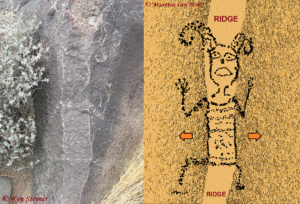
Figure 7: Anthropomorphic petroglyph from Three Rivers, New Mexico. Photograph © by Ken Steiner and drawing © by Maarten van Hoek
A comparable (yet very different) situation has been reported by Bob Young in the Albert Canyon in the Navajo Dinétah District (NW New Mexico). It is a petroglyph of an anthropomorphic figure whose slender (single-line) body and very small, circular head have intentionally been executed exactly on the edge between two panels, while the arms and legs are found on those two panels. This panel however is found far to the NNW of the Mogollon site of Three Rivers and more likely is an exception.
Being very rare in North America, the same technique is found quite often in northern Peru, especially at Palamenco where (on Boulder PAL-103) I recorded a snake petroglyph (with a prey in its belly; a natural yet anthropically outlined depression) and (on Boulder PAL-121) the petroglyph depicting the head of a condor, using the outlines of several small panels and the depression in the boulder.
A completely different use of the 3D character of the stone also is found at Palamenco. On Boulders PAL-123, 116 and 134 are (respectively) one, three and (possibly up to) six concentric rings intentionally executed around the apex of the boulder, thus looking like contours. The same feature has been recorded by us on Boulder BOL-011 at the petroglyph site of Quebrada de los Boliches (Van Hoek 2020a: Figs 34 to 36).
TYPE 2: SCENES
Scenes are always interesting, but scenes using two or more panels are very special. At Three Rivers I know of only one (possible) scene that is folded across two panels. It concerns a boulder (or outcrop stack?) with the petroglyph of an outlined anthropomorphic figure on one vertical panel (Figure 8). One arm is raised above its head, while the other arm extends to the left, intentionally continuing around the corner and (intentionally?) touching the head of a fully pecked bird petroglyph. The meaning of this possible scene is obscure to me, but birds are an important feature at Three Rivers (at least 500 examples have been recorded).
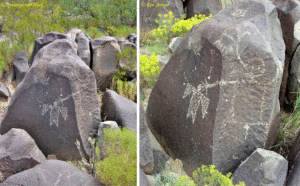
Figure 8: Possible interaction between an anthropomorphic figure and a bird at Three Rivers. Photographs © by Ken Steiner and Maarten van Hoek
It proves that scenes using two panels are extremely rare in the rock art of the SW of the USA. One example is found at the Basket Site in Rosy Canyon, southernmost Utah, where the petroglyph of a quadruped on Panel A is hit by the arrow of an archer depicted on Panel B (Figure 9) of a much larger panel covered with petroglyphs. A similar situation has been recorded by us on a panel at Shay Canyon, Utah (Figure 10). Michael Radford photographed a possible scene involving two “kissing” bird petroglyphs on two adjacent panels of an outcrop at La Cieneguilla in northern New Mexico (Figure 11). At a petroglyph site at Holyday Mesa, Jemez Mountains, NW New Mexico, Dennis Slifer recorded a unique scene in which the purported phallus of a “Flute-Player” extends around the corner for six feet and apparently fertilises a clearly female figure with both arms raised (Figure 12). According to Slifer (2007: 44; Fig. 1.4.1), this scene illustrates an old ethnographic Hopi account.
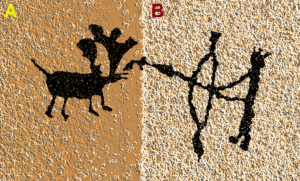
Figure 9: 3D hunting scene at the Basket Site in Rosy Canyon, Utah. Drawing © by Maarten van Hoek, based on a photograph by Tom McCoppin
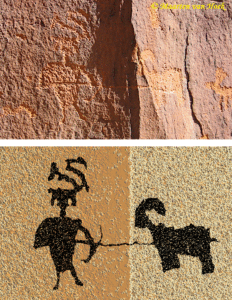
Figure 10: 3D hunting scene at the Shay Canyon Site, Utah. Photograph and drawing © by Maarten van Hoek
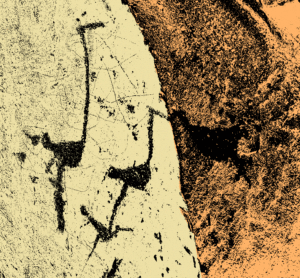
Figure 11: Possible interaction between two birds at La Cieneguilla, New Mexico. Drawing © by Maarten van Hoek, based on a photograph by Michael Radford (in Facebook)
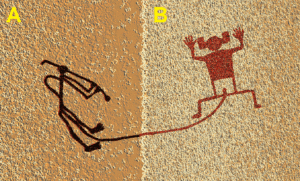
Figure 12: Scene involving a “Flute-Player” and a female at Holyday Mesa, New Mexico. Drawing © by Maarten van Hoek, based on a drawing by Dennis Slifer (2007: Fig. 1.4.1)
At Palamenco in South America we did not register petroglyphs of scenes executed on two panels, but on Panels OFR-013A and B at Ofragía in the Codpa Valley of northern Chile there is an anthropomorphic figure that apparently leads a row of three camelids, all connected by lines. The neck and head of the last camelid (and the leash connected to the tail of the other camelid) are found on the same panel, but the large body and the legs have been executed on the adjoining pane). About 20 km west in the same drainage is the petroglyph site of Calaunsa where Aguirre Bianchi recorded a unique scene that is folded across two facing panels of Boulder CAL-071. It is a group of five anthropomorphic figures (possibly depicting “Pochtecas” – a class of travelling Mesoamerican merchants; hence the backpacks) that are connected by a long line (the path they walked?). Only the leading figure is executed on Panel D, while the other four figures appear on Panel C (Figure 13).
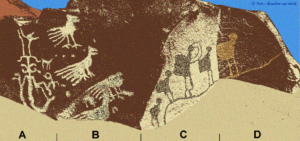
Figure 13: Scene involving a row of backpackers at Calaunsa, northern Chile. Drawing © by Maarten van Hoek, based on a photograph by Aguirre Bianchi
TYPE 3: MASKS
At Palamenco in northern Peru there are quite a few petroglyphs of purported snakes that have been folded across two panels. Palamenco also counts about 20 images of heads or masks or faces (there is no ethnographic account to tell what exactly is depicted), but only in two cases a mask (or rather, a face) has been executed on two panels. One case concerns a small, spherical boulder (PAL-005) on which three elements (two eyes and a long curved mouth) were added in such a way that the image together with the 3D character of the boulder results in a 3D-looking mask, despite the fact that there are no two panels (Figure 14A). The other case involves four simple elements on Boulder PAL-061, of which the eyes and the mouth are located on two adjacent panels, while the faint nose-element sits on the edge. As far as I know, this image (Figure 14B) represents the only true example of a 3D mask or face in South America comparable with the many examples in New Mexico, North America.
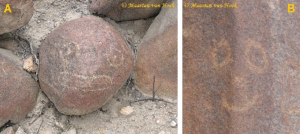
Figure 14: Petroglyphs of 3D masks or faces at Palamenco, northern Peru. Photographs © by Maarten van Hoek
Indeed, in sharp contrast with Palamenco are the numerous masks images at Three Rivers. More than 448 examples have been registered among the 12.383+ individual petroglyphs at this site and – interestingly – quite a few have been deliberately executed on two adjacent panels. In general typical Jornada Mogollon masks are characterised by flat-topped heads, often (but not always) almond-shaped eyes (with pupils and/or eyebrows frequently indicated). And often there is a large, triangular nose, the apex of which sits between the eyes or touches either the joint eyebrows or the head contour. Several masks also feature – often complex – facial decoration. Although Duran and Crotty (1999: 54) state that ears are omitted in Jornada Style masks and emphasised (rather, more present [in my opinion]) in Anasazi masks, at least a few Jornada masks and anthropomorphs at Three Rivers shows ears (see for instance Figures 19 and 26). Also the – in my opinion – most complex (bicephalic) mask petroglyph at Three Rivers has ears; one even with an earring (Van Hoek 2020b: Fig. 90; see also the lower inset).
It proves that the 3D mask petroglyphs are unevenly distributed across Three Rivers and although only a few locations of the panels are known to me, I have included a map (Figure 16) in which the site is arbitrarily divided into four sections: North, Mid, South (the main ridge) and West (an isolated hillock). The locations of some relevant panels have been marked on that map. A small number will be discussed in more detail, while Figure 15 offers a collage of a selection of other 3D masks at Three Rivers (without knowing their exact location).
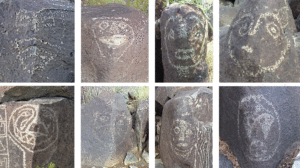
Figure 15: Collage of some of the petroglyphs of 3D masks at Three Rivers. All photographs © by Ken Steiner
*
THREE RIVERS NORTH
In the northernmost section of the ridge is a boulder (labelled 3R-North-018 by me; the much approximated location indicated on the map of Three Rivers [Figure 16]) with the petroglyph of a large, irregularly shaped mask, which is folded across two slightly sloping panels. The fully pecked nose and the outlined mouth sit on the edge, while the mouth is actually formed by a natural, shallow exfoliated part of the edge. This natural depression has been encircled by pecking, enhancing the mouth (Figure 17) and thus this mask represents a (literally) twofold use of the 3D character of the boulder. There are no ears and the circular eyes are joined (a comparable pair of joined eyes – plus mouth, but no head-line – is found on a boulder in the central section of Three Rivers). Also located in the northern section of the ridge is another boulder or outcrop stack (that I have not seen) with the petroglyph of an outlined 3D mask with a complex interior pattern and almond-shaped eyes (see Figure 15: lower row; leftmost photo). It sits on a vertical (outcrop?) stack and faces south (all bearings in this study are only approximated; they have not been established in the field).
*
THREE RIVERS MID
About 530 m to the south, on a west facing cliff of the central section of the ridge, is an outcrop stack (3R-Mid-040) with on its south facing panel the well-known petroglyph of the mountain lion (its front claw wrapped around the corner). Understandably, the attention typically focusses on the impressive lion image, but what went possibly unnoticed, is that this stack has probably the largest 3D mask petroglyph at Three Rivers (and possibly in the whole of the SW of the USA as well). The face (there is no observable head outline; but perhaps the whole monolith served as a mask) sits on the adjoining south and east facing panels and comprises two large eyes (with small pecked pupils?) and a large triangular nose that sits perfectly on the edge, thus “obeying” the practice at Three Rivers regarding the manufacture of 3D masks. Apparently the mouth is absent, but thin, curved lines just above the eyes might represent eyebrows (not indicated in Figure 18).
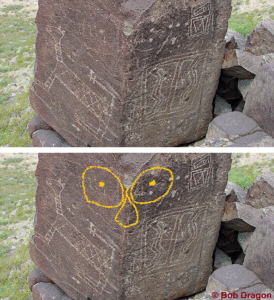
Figure 18: Large 3D mask petroglyph at Three Rivers Mid. Photograph © by Bob Dragon, superimposed by a drawing © by Maarten van Hoek
*
THREE RIVERS SOUTH
About 1000 m to the SE, in the southernmost section of the ridge, is another boulder (3R-South-003) with the petroglyph of a large, circular mask, which is also folded across two slightly sloping panels Figure 19). This time the almond-shaped eyes are separated and there is an ear at each side. Interestingly, the large, triangular nose – which sits perfectly on the edge – is half outlined (left panel) and half pecked (right panel), which emphasises the 3D character and the duality of the image even more. The head seems to have a lightly pecked extension (a head-dress?) and a lightly pecked (severed?) neck.
*
THREE RIVERS WEST
Before discussing the group of mask petroglyphs at Three Rivers West I have to mention another “tradition” at Three Rivers. It proves that – very rarely, though – the manufacturer intentionally created the image of only one half of a mask (only the right half or only the left half) in such a position that one half emerges from the edge of one panel. However, the adjacent panel did not receive the other half (on purpose). Viewed from one angle, the mask only seemingly has the other half on the hidden panel, but viewed from the opposite angle it becomes clear that there is no other half, as is evident with the mask on Boulder 3R-Mid-021. Yet, again the pecked nose-half is triangular and sits perfectly on the edge (Figure 20). The non-inclusion of one half of a mask could be an expression of the rare concept sometimes used in rock art of intentionally “depicting” certain features invisibly (Van Hoek 2019). Most likely, the prehistoric manufacturer and possibly the prehistoric observers simply accepted the “half-mask” to represent a fully functioning complete mask.
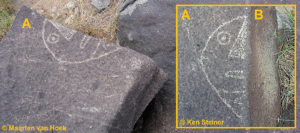
Figure 20: Petroglyph of a “half-mask” at Three Rivers. Photographs © by Ken Steiner and Maarten van Hoek
Three Rivers West is an isolated, small, conical knoll just west of the main ridge. On the SSW edge of the summit is a conspicuous group of outcrop stacks, indicated by an arrow in Figure 21. Surprisingly, as far as I know, this group comprises the biggest concentration of 3D masks at Three Rivers. No less than five 3D masks are found on the top of this small hillock and four examples are even concentrated in a very limited area, estimated by me to measure only 10 m2.
The four 3D masks (plus one “half-mask”), found very close together at the main group, are indicated on the map (see Figure 16) as 3R-West-4. Mask A in Figure 22 clearly shows the complete mask – which faces NE – with again the nose on the edge. What cannot be discerned in Figure 22 is the pecked line from the chin area (see however my Cover Photo in this PDF) that continues upwards “overlapping” the head contour at the left and continuing as a line topped by a Tlaloc-looking set of eyes (which is visible in both photos). Although – in my opinion – lines from apparently decapitated heads on rare Mogollon Mimbres bowls (see for instance Kline 2012: Fig. 37) most likely represent blood or perhaps the life-line of the dead person, it is indeed possible that the line from the 3D mask petroglyph is in some way related to blood and decapitation.
As far as I know, no unambiguous “trophy-heads” have been depicted at Three Rivers, although some 2D and 3D masks clearly have a neck (see for instance Figure 19) that seems to have been cut off sharply. There also are several apparently severed leg and arm petroglyphs at Three Rivers; perhaps testimony of a Meso-American influence. Importantly, decapitation and severing of limbs were definitely practiced in Meso-America and was, according to Schaafsma (2007: 115) commonly associated with fertility. Also in the rock art of the SW of the USA rock art images of anthropomorphs holding a “trophy-head” occur, especially in Basketmaker and Fremont sites. Yet, in New Mexico rock art sites images of “trophy-heads” or “trophy-head” carriers are either absent or extremely rare and all are rather ambiguous. At La Cieneguilla in northern New Mexico Michael Radford recorded the petroglyph of a recumbent (dead?) anthropomorphic figure (with two small natural holes for eyes) that is tentatively suggested to represent a “trophy-head” carrier. Also petroglyphs of possibly severed arms occur at La Cieneguilla (and occasionally at other sites). Are those images at La Cieneguilla a link with the severed leg and arm petroglyphs at Three Rivers further south?
Mask B at Three Rivers West is much larger and faces north, but only the right half is visible in Figure 22. The left half (facing east) is invisible in this photo. Yet, even when photographed from the right angle, the mask on this tilted stack is hardly visible in unfavourable light, as is evident in Figure 23. Fortunately Ken Steiner managed to photograph the complete mask, although his photo does not show the 3D character (Figure 24). It proves to have eyebrows, large almond-shaped eyes with a very small pupil (compare this with the Mountain Lion Stack Face; see Figure 18) and a very large open mouth with exposed teeth. The nose is fully pecked and roughly triangular. Mask C is a “half-mask” that faces NW and upwards and for that reason is less visible in Figure 22, but it shows up better in Figure 25. The stack on which mask D is found is not even visible in Figure 22, but is indicated by the arrow. However, Bob Dragon made a photograph of the group with one half of Mask D clearly visible (Figure 25). The complete Mask D faces west (Figure 25: inset; see also Figure 3). Importantly, all the masks in this group have almond-shaped eyes; a characteristic of many (but not all) Mogollon masks.
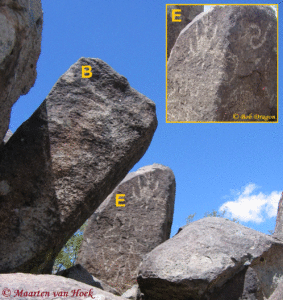
Figure 23: Petroglyphs of two 3D masks (B and E) at Three Rivers West. Photographs © by Bob Dragon and Maarten van Hoek
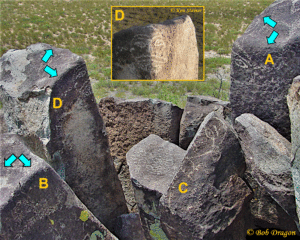
Figure 25: The Gallery of 3D masks at Three Rivers West. Photograph © by Bob Dragon, superimposed with information by Maarten van Hoek. Inset: Detail of Mask D. Photograph © by Ken Steiner
Mask E is a rather simple mask found on a stack just west of stack B (see Figure 23 and inset). The complete mask faces NE. An outlying stack – found only a short distance to the NW – has the fifth 3D mask of the group on the knoll at Three Rivers West (Figure 26 and inset). It has almond-shaped eyes. On another panel of this outlying stack there also is a 2D mask with large circular eyes.
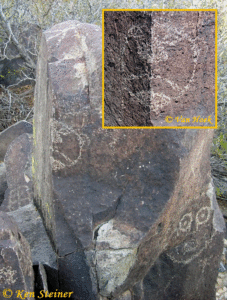
Figure 26: Petroglyphs of 2D and 3D masks at Three Rivers West. Photographs © Ken Steiner and (inset) Maarten van Hoek
There are probably more 3D masks at Three Rivers. Polly Schaafsma (2001: 210) argues that the mask in her “Fig. 166 – lower left” is carved on a rock corner. It is located in the south sector. However, for the most part the mask is situated on a very slightly sloping, convex panel and only a very small fraction is carved on the more steeply sloping panel to the left. Therefore it is not admitted here as a true 3D mask. Finally, there are two more masks that have a 3D character. Kay Komuro photographed another simple 3D mask petroglyph at Three Rivers, while Duran and Crotty included a sketch (1999: 6 – drawing 7W) of a simple mask that seems to have been folded across two panels. Unfortunately, it is unknown to me where these two petroglyphs are located.
*
THE CONTEXT OF THE THREE RIVERS 3D MASKS
Although it is often hard to tell which culture is responsible for the manufacture of a certain rock art image in a confined area, the distinction between Mogollon imagery and Anasazi imagery is obvious when comparing the images that are typical for those two cultures. For instance, images of “Flute-Players” are icons of the Anasazi culture (and of course of some other SW cultures like the Hohokam), but earlier I demonstrated that “Flute-Player” images are absent in the Mogollon rock art (Van Hoek 2010). Yet, some petroglyphs at Three Rivers seem to have been depicted in the “Flute-Player” position, without, however, ever holding an object. (Figure 27; yet notice the humpback and the phallus, which are characteristic properties of the SW “Flute-Player”). Furthermore, I also emphasised that too often a “Flute-Player” image is uncritically said to hold a wind instrument, while also other objects may be involved, such as a pipe, an arrow, a spear or a stick (Van Hoek 2010). Moreover, the “flute-less” “Flute-Player” petroglyphs at Three Rivers (for more information see Van Hoek 2010) might even have intentionally been depicted holding an invisible object, comparable with the Pakra Monkey petroglyph (Van Hoek 2019: Fig. 23)and the well-known Monkey geoglyph at Nasca Pampa, both located in southern Peru (Van Hoek 2019: Fig. 24A).

Figure 27: Petroglyph of a humpbacked and phallic figure at Three Rivers. Photograph © by Maarten van Hoek
Characteristic for the Mogollon cultures are the many rock art figures that – whether correct or not – are labelled “Tlaloc”, referring to the important Meso-American rain deity. Importantly, at Three Rivers about 110 petroglyphs of “Tlaloc” figures have been recorded and at least one depicts a “Tlaloc” mask, which is also special for its mouth full of teeth (Figure 28). But – as far as I know – 3D “Tlaloc” masks have not been reported at Three Rivers (and perhaps nowhere-else in New Mexico). Also the extensive Mogollon site of Hueco Tanks has quite a few “Tlaloc” pictographs (Figure 29).
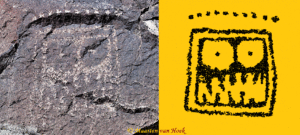
Figure 28: Petroglyph of a “Tlaloc” mask at Three Rivers. Photograph and drawing © by Maarten van Hoek
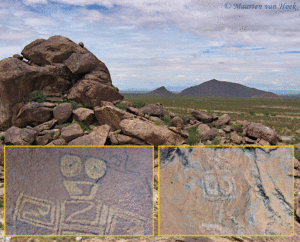
Figure 29: Pictographs of two “Tlaloc” masks at Hueco Tanks, Texas. Photographs © by Maarten van Hoek
Interestingly, Duran and Crotty (1999: 54-55) remark that such an important figure as the so-called Tlaloc, which appears in nearly every site where Jornada Style rock art is found, is completely lacking at Anasazi sites with Kachina elements. However, according to Margaret Berrier (2013: map) in New Mexico – an area with over 620 rock art sites of which 79 sites have “Tlaloc” images – three sites with “Tlaloc” images also occur in Anasazi territory. Two of those three sites (plus five more sites) are relevant in this study: Cerro Indio on the Rio Grande and – 100 km further north – Petroglyph National Park just west of Albuquerque (although in two other publications by Berrier [2018: Fig. 13c; 2019] this last site is omitted in an identical map, which is confusing). And there possibly is a fourth site – much further north – with “Tlaloc” looking petroglyphs. At La Cieneguilla (250 km north of Three Rivers) Michael Radford photographed at least two petroglyphs that show certain “Tlaloc” properties, one of which seems to have small natural holes for eyes and mouth. Concluding, especially the distribution of “Tlacoc-Figures” and “Flute-Players” seems to indicate the boundary between respectively Jornada Mogollon and Anasazi (Rio Grande Style) rock art distribution. Yet this boundary only offers a rough indication, as we have seen that there are some possibly related images outside each territory.
Possibly for that reason, rock art researchers have published maps with differing boundaries separating the Mogollon and the Anasazi. Therefore I decided not to include a boundary-line between the two territories in my map (Figure 30), but instead I have numbered the Mogollon sites (yellow squares) that are relevant to this study with: 1 (Three Rivers), 8 (Waterhole Canyon – a pictograph site) and 9 (Hueco Tanks – also a pictograph site) on the map of Figure 30. The Rio Grande Style sites (red squares) that are relevant to this study are numbered on that map as 4 (Tomé Hill), 5 (Petroglyph National Monument), 6 (Petroglyph Hill in the Galisteo Basin), 7 (La Cieneguilla) and 8 (Cochiti Reservoir), while the two sites (orange squares) in the immediate contact zone between the two cultures are numbered 2 (Cerro Indio [or San Acacia or Indian Hills]) and 3 (Abó).
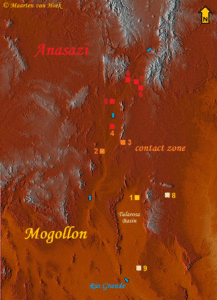
Figure 30: Map of the Study Area. Drawing © by Maarten van Hoek; map based on OpenStreetMap-Contributors
Except for Hueco Tanks all other eight rock art sites have one thing in common. They all have at least one – and often many more – image of a 3D mask. Hueco Tanks is said by Texas Beyond History to have more than 200 Mogollon masks and is consequently claimed to constitute the largest assemblage in North America. This statistical statement is correct, but only when it concerns painted masks, since Three Rivers has at least 448 petroglyphs of masks. Incidentally, it is unknown to me whether any 3D mask occurs at Hueco Tanks. The rock art inventory (Davis, Sutherland 1997) does not have any illustration showing a 3D mask. This absenteeism may be due to the fact that the Hueco Tanks sites comprise more “hidden” art in caves and shelters, while open air sites better facilitate the manufacture of 3D mask taking advantage of the shifting light conditions. In sheltered caves like at Hueco Tanks any 3D character is hard or impossible to appreciate. Yet, one set of pictographs at Hueco Tanks however, might depict a scene depicted on two adjacent panels. An anthropomorphic images reaches towards a Bighorn that seems to have been pierced by a spear of some kind (Berrier 2019: referring to Kirkland Illustration 10-B; Davis and Sutherland 1997: 22; Plate 132).
Remarkably, it seems that Three Rivers constitutes an anomaly when it concerns the distribution of 3D masks in New Mexico. There are numerous Mogollon rock art sites in our study area – many with mask images – and yet Three Rivers is the only petroglyph site – that I know of – to have 3D masks. In the Mogollon Territory I only know of only one other rock art site with a (possible) 3D mask. It concerns a pictograph at the Waterhole Canyon site (also known as Tully Cave; not visited by me), which is located about 50 km east of Three Rivers (Figure 31). Surprisingly, all other sites known to me to have 3D mask representations are found north of Three Rivers and most are even located well in Anasazi Territory. Two sites, Cerro Indio (Site 2 on the map) and Abó (Site 3) are located in the direct contact zone between the Mogollon and Anasazi cultures and will be briefly discussed first.
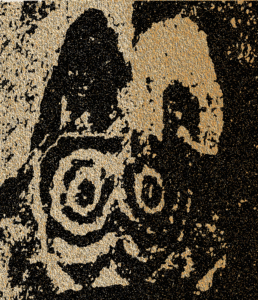
Figure 31: Pictograph of a possible 3D mask at Waterhole Canyon, New Mexico. Drawing © by Maarten van Hoek, based on a photograph by the El Paso Archaeological Society (Berrier 2019: PDF page 14)
Cerro Indio – also known as San Acacia (Butte) – is an extensive rock art site located 130 km NW of Three Rivers. It comprises a north-south running ridge of about 600 m in length that is directly overlooking the Rio Grande to the east (upstream) and south (downstream). Besides several pictographs (including a “Flute-Player”-like figure and an archer), the site has many petroglyphs of masks (and also of “Flute-Players” and of the typical Rio Grande Style [Anasazi] four-pointed star image). The site is said to have more than 200 masks (Schaafsma 1992: 93), mainly comprising petroglyphs (and only a few pictographs). The masks at Cerro Indio constitute a mixture of flat-topped masks and circular-oval masks. Yet, Schaafsma remarks: “Characteristically, the masks at Cerro Indio have flat tops and curved lower contours” and she further argues that “These masks show typological similarities with Jornada Style masks” (1992: 93). I do not contest the Jornada relationship, but what about the – often small and simple – masks that are circular or oval-shaped at this site?
Some masks at Cerro Indio are folded asymmetrically across two panels and are not admitted here as 3D masks. Only a fraction of the 200+ masks are truly 3D; all comprising petroglyphs only. Ken Steiner recorded at least seven examples, plus one – in my opinion – unfinished 3D mask (Figure 32) and three doubtful examples (that are found on often rough and irregular surfaces). The 3D masks include very simple, circular or oval examples (none with the outlined, almond-shaped eyes that are so characteristic for Mogollon masks), while the three – often larger – slightly more complex 3D examples all have a flat top. Especially these three masks may indeed be Jornada related, while the circular-oval 3D examples more likely represent a Rio Grande Style (Anasazi) origin or influence.
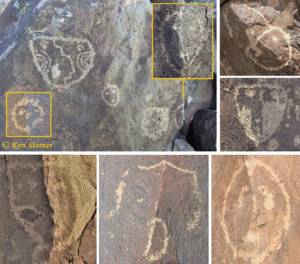
Figure 32: Collage of a number of 3D masks at Cerro Indio, New Mexico. All photographs © by Ken Steiner
The petroglyph site of Abó is located 125 km NNW of Three Rivers and 50 km ENE of Cerro Indio. Schaafsma (2001: 264) mentions that the masks at Abó resemble those from the Galisteo Basin (120 km to the NNE) and – more importantly – that “some are pecked on rock angles”, unfortunately not mentioning numbers. However, Ken Steiner recorded at least one petroglyph of a 3D mask (Figure 33). It is a very simple circular mask. Also at this site the typical Rio Grande Style four-pointed star image has been recorded as well as some simple masks using small, natural depressions as eyes. One such mask is even rotated 90 degrees to match the two natural, vertically arranged holes as eyes (this may emphasise the importance of the eyes).
Further north from Abó Jornada Mogollon influence rapidly diminishes and the Rio Grande Style rock art imagery dominates. About 60 km NNE of Cerro Indio is Tomé Hill (El Cerro de Tomé), a low knoll of about 1200 m in length, overlooking the valley of the north-south flowing Rio Grande from the east. Again there are many (mainly circular) mask petroglyphs at this site. On one outcrop at least two simple, circular mask have deliberately been placed on the corner of two adjacent panels (Schaafsma 2001: Fig. 225). Some 25 km west of Tomé Hill on the Rio Grande, in the middle of dominantly Rio Grande Style rock art, is the rock art site of Arroyo Garcia, where at least one 2D mask petroglyph (topping a large squatting figure) clearly has Jornada Mogollon properties, especially the almond-shaped eyes.
Travelling upstream for about 40 km from Tomé Hill the enormous complex of rock art sites just west of Albuquerque is reached. The complex – Petroglyph National Monument – comprises three major groups of petroglyphs over a length of mainly east and south facing cliffs stretching for about 25 km: Rinconada Canyon (Site 5A), Boca Negra (Site 5B) and Piedras Marcadas Canyon (Site 5C). Although the whole complex is estimated to have 17.000+ petroglyphs, including many masks, only two or four 3D masks are known to me to have been recorded at each group. Moreover, on the internet I found at least two photos that shows a simple, circular 3D mask each, without stating, however, in which group they are found. Therefore the total of 3D masks at Petroglyph National Monument probably is 11+.
Group A. There are many mask petroglyphs at Rinconada Canyon, including at least one circular 2D mask where the eyes and the mouth are formed by small, natural depressions (Figure 34). Importantly, the mask has been rotated to match the two vertically arranged natural holes that represent the eyes, which are located at each side of the faintly pecked nose (assuming that the boulder has not been disturbed). Compare this rotated mask with a similarly rotated 2D mask recorded at Abó (not illustrated here).
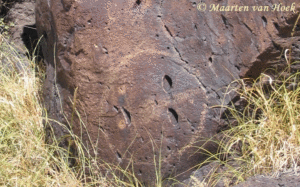
Figure 34: Petroglyph of a 2D mask at Rinconada Canyon, New Mexico. Photograph © by Maarten van Hoek
There are also at least two 3D masks in Group A. One example is oval-shaped with a matching oval-shaped mouth (Figure 35), while further west is a simpler, circular 3D mask next to a complex 2D mask topped by a bird petroglyph (Figure 36).
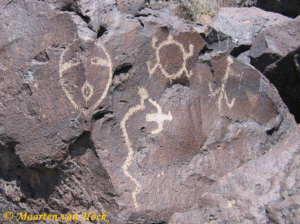
Figure 35: Petroglyph of a 3D mask at Rinconada Canyon, New Mexico. Photograph © by Maarten van Hoek

Figure 36: Petroglyph of a 3D mask at Rinconada Canyon, New Mexico (notice the difference in patination). Photographs © by Maarten van Hoek
About 4 km to the NNE of Rinconada Canyon is Boca Negra (Group B), where at least three 3D masks have been recorded, including a very small, simple, circular example with only two eyes. The other two oval-shaped 3D masks are rather damaged and/or weathered. Also as this site is a large spiral (intentionally?) folded across two adjacent panels. Roughly 3.5 km to the NE is Piedras Marcadas Canyon (Group C), where again at least three 3D masks have been recorded. One large boulder has an (inverted?) small mask, while lower down on the same edge is a rather complex 3D mask with large triangular appendages, possibly depicting ears (Figure 37). The third example is interesting as – in my opinion – the 3D mask (partially superimposing an older 2D mask) has been re-worked, as – possibly – the original circular mouth has been superimposed by a straight line now more clearly indicating the mouth (Figure 38). A fourth example has been recorded by Dennis Slifer (see Figure 42B).
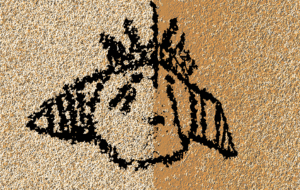
Figure 37: Petroglyph of a 3D mask at Piedras Marcadas, New Mexico. Drawing © by Maarten van Hoek, based on a photograph by “Men in Black” (at Flickr)
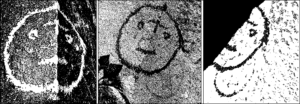
Figure 38: Three different views of a petroglyph of a 3D mask at Piedras Marcadas, New Mexico. Drawings © by Maarten van Hoek, based on photographs by (from left to right): Roving Magpie, Mike Stoy, Bart Cam (all three posted at Flickr)
About 75 km to the NE of Piedras Marcadas is Galisteo Basin (Site 6). For this extensive area with many individual sites, Schaafsma (2001: 265) mentions the use of holes in the rock surface. For instance, at the rock art site of Pueblo Blanco (45 km SSW of Santa Fe) each of three 2D masks has been executed around a natural depression, which all serve as mouths (Schaafsma 2001: Fig. 212). She also mentions the occurrence of “masks on rock angles”, but does not provide further specific statistical or locational details (however, see the Appendix for an extra 3D mask in this area). At Petroglyph Hill, a site with 2000+ images (about 12 km north of Pueblo Blanco), at least one (circular) petroglyph of a 3D mask has been recorded. The face is very simple, but it has an interesting headgear (Figure 39).
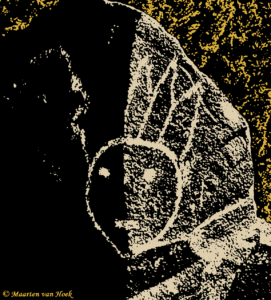
Figure 39: Petroglyph of a 3D mask at Petroglyph Hill, New Mexico. Drawing © by Maarten van Hoek, based on a photograph by Glyphwalker (at Flickr)
Only 25 km to the NW is La Cieneguilla (Site 7), a very extensive site with approximately 5000+ petroglyphs. There are many mask petroglyphs (some using small natural holes for eyes), although their numbers are unknown to me. Yet, at least ten 3D masks have been recorded at this site and all are rather simple, mainly circular or oval-shaped masks with often only two dots and a line representing facial features (Figure 40). Already discussed is the mask in Figure 4. One oval mask is somewhat special as it has a mouth that has been pecked around a circular natural depression on the edge between two adjacent panels (Figure 41).
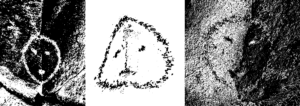
Figure 40: Petroglyphs of 3D masks at La Cieneguilla, New Mexico. Drawings © by Maarten van Hoek, all based on photographs by Michael Radford (in Facebook)
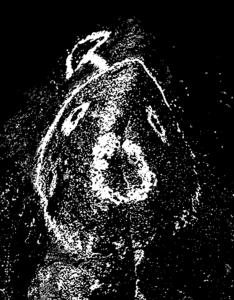
Figure 41: Petroglyph of a 3D mask at La Cieneguilla, New Mexico. Drawing © by Maarten van Hoek, based on a photograph by Bob Wick
Roughly 25 km to the WNW of La Cieneguilla is the rock art complex referred to as Cochiti Reservoir (Site 8), which was extensively surveyed and described by Polly Schaafsma (1975). In fact the complex comprises a series of up to 17 sites in White Rock Canyon along the Rio Grande. There are – again – many often much differing 2D masks of which a few have been folded over two rock panels in a vertical fashion, which excludes them from being accepted as 3D masks. Three sites are said by Schaafsma to have at least five 3D masks altogether: Site LA 10113 has a small circular 3D mask pecked over a rock angle (Schaafsma 1975: 15); Site LA 10110 also has one simple circular 3D mask (Schaafsma 1975: 15; Fig. 25) and Site LA 10111 – LA 10112 has three simple circular 3D masks that are pecked on the rock angles of one large boulder (Schaafsma 1975: 17; Fig. 29). Further north representations of masks in rock art rapidly diminish and seem to be absent in neighbouring Colorado (Schaafsma 2001).
*
THE MASK
This study clearly demonstrated that – globally speaking – the use of natural rock features in rock art developed completely independently at several much distant and culturally unrelated sites. For instance, the backpacker-scene folded across two panels at the petroglyph site of Calaunsa in northern Chile has nothing to do with a comparable hunting scene in Shay Canyon in Utah, USA. The use of rock edges in Three Rivers (see Figure 7) may be compared with similar use of rock edges at Palamenco, but this practice definitely constitutes an unrelated, parallel development. Likewise, the unique 3D face at Palamenco (see Figure 14B) cannot in any way have been influenced by the production of many 3D masks at Three Rivers in New Mexico (or vice versa). Obviously, the human mind works in similar ways in much distant parts of the globe.
Yet I have argued earlier that certain rock art images have travelled across the globe, often over long distances (Van Hoek 2018b). Diffusion is also said to explain the distribution of rock art images of masks across New Mexico and adjacent areas (westernmost Texas, eastern Arizona and northern Mexico). But what do those masks symbolise?
Generally speaking, the majority of masks (if not all) depicted in the rock art of New Mexico symbolise Kachinas. Kachinas are spirit beings in the religious beliefs of the Pueblo peoples. A Kachina can represent anything in the natural world and their symbolic content is mainly visualised by their much differing masks. In general Kachinas are considered to be benevolent anthropomorphic super-naturals, primarily associated with clouds and rain (Schaafsma, Schaafsma 1974: 535). Although the word Kachina literally means “life-bringer”, there are also a few Kachinas that are considered to be malevolent, like ogres or cannibals that are said to prey on misbehaving children (Wright 2008: 116). An example of such an ogre or cannibal possibly is the toothed ogre petroglyph at Three Rivers (see Figure 6: top right). In my opinion, especially because of its menacing toothed open mouth, this figure may indeed represent an ogre or a cannibal and just possibly the intentionally included natural projection has been used by the manufacturer to represent or symbolise a child (?) devoured by the cannibal figure. Cannibals and ogres said to prey on misbehaving children are a common concept in the SW.
Important in this discussion is that a Kachina performer only realises visual reality by putting on a specific mask that only becomes sacred after having been painted with facial features and the appropriate symbolic patterns. Even more importantly, the mask only becomes animate or invested with its full spiritual potency after the eyes are painted and cut out (this possibly explains the use of natural holes as eyes in rock art imagery). Thus, when a Hopi impersonator places a mask upon his head and wears the appropriate costume and body paint, he believes that – for the time of the dance – he has lost his personal identity and has received the spirit of the Kachina he is supposed to represent (Wright 2008: 113). It proves that the mask is an important symbolic means of transformation. This paragraph demonstrates the fundamental importance and profound power of the mask in the worldview of the Pueblo peoples. The mask is key; also in rock art.
It is certain that diffusion played an important role in the distribution of masks in New Mexico, as it has convincingly been demonstrated, especially by Polly Schaafsma (2001: 244), that the Pueblos – the Anasazi who manufactured the Rio Grande rock art style in central and northern New Mexico – accepted a new ideology and associated art complex from the Jornada Mogollon in southern Mexico (disputed though by Duran, Crotty 1999: 55). She further argues (2001: 254) that “The rock art of the Rio Grande Style is similar in many respects to that of the Jornada, for we are dealing here with a continuing tradition”. It is thus highly likely that the Mogollon peoples in the south had contact with the Pueblo peoples to the north. This process of diffusion therefore also applies to the numerous depictions of masks in the rock art of New Mexico.
It is further argued that the Kachina cult developed from elements of Mesoamerican ritual beliefs and was brought through the great trade centre of Casas Grandes in northern Mexico via the Mogollon cultures to the Pueblo area. The “Tlaloc” figure and the feathered serpent and especially the mask are the most important of those Meso-American elements depicted in the rock art of New Mexico. Importantly, the mask has always been used as a ritual agent of transformation in Meso-America. There are even several Meso-American masks that depict the transformation from life to death, simultaneously symbolising the life-death duality. One half of the mask represented the left- half of the head of a living human; the other half a partially depicted death skull (Van Hoek 2020b: Fig. 1). Importantly, the Meso-American concept of transformation by wearing a scared mask is comparable with the transformation from Pueblo men to Kachinas also by donning a specific mask. Even several Meso-American funeral masks look similar to Mogollon mask petroglyphs. They often have almond-shaped eyes, eyebrows, a triangular nose and often a large grinning mouth and facial decoration (for instance a stepped pattern looking like Mogollon and Pueblo cloud symbols). They moreover have a flat top and rounded chin, thus the shape also resembles several Mogollon mask petroglyphs (Markman, Markman 1989: Cp. 8).
THE THREE RIVERS ANOMALIES
Although many rock art sites in our study area have depictions of masks, there are two sites in the Mogollon Territory that represent true statistical anomalies. Regarding pictographs Hueco Tanks is a statistical anomaly, as it has an excess of 200 rock paintings of masks, while Three Rivers represents an even weightier statistical anomaly, as it has an exceptionally high number of mask petroglyphs: more than 448 examples have been recorded. This means that both sites must have served as most important ceremonial and sacred centres, not only on local and regional level, but attracting people from far away. But from how far?
Moreover, in the Mogollon Territory Three Rivers also represents an anomaly regarding the manufacture of 3D masks. No less than 18 examples are known to me to exist at Three Rivers and most likely there are (some?) more. Those 18 masks represent the biggest collection of 3D masks in New Mexico. About half a century ago Polly Schaafsma (1975: 51; my emphasis) correctly noticed that “The incorporation of rock angles and irregularities into petroglyph figures is a marked trait at Three Rivers”. In this respect it is remarkable that – apart from the painted (possibly 3D) example at Waterhole Canyon – petroglyphs of 3D masks only seem to occur at Three Rivers, as far as I know. Of course I have no knowledge of every rock art image ever manufactured in the Study Area, but most likely no-one has, also because many sites still need to be surveyed. Even large Mogollon rock art sites like Three Rivers and Alamo Mountain (with possibly over 10.000 petroglyphs) still have not yet been fully documented. Also, several sites have (partially) been destroyed, anthropically damaged or are in a poor condition because of natural causes.
Remarkably, from this survey an – in my opinion – conflicting distribution pattern regarding 3D masks emerges. In the Mogollon Territory only one site houses the majority of 3D masks (18), which sharply contrasts with the at least seven sites with 3D masks in the Anasazi Territory with altogether twice at much examples (37). The question now is: where in New Mexico did the practice start to use rock angles for the intentional production of 3D masks? We know that the general direction of diffusion of Mogollon imagery and ideology is accepted to have travelled north to the Pueblo peoples along the Rio Grande. In this respect it is important that Polly Schaafsma (2001: 241) argues that “the Jornada practice of pecking masks on rock corners may have derived from the Mexican practice of situating mask sculpture in a similar fashion on the corners of ceremonial buildings”, which seems to confirm the south-north direction of diffusion of 3D masks.
There are now several possibilities that may explain the practice of creating 3D masks in New Mexico. Highly unlikely is the possibility that each 3D mask developed independently at each site, thus completely excluding diffusion. More likely is the possibility that the practice to manufacture 3D masks was invented at a small number of sites and diffused from two or more sites to other sites. Thirdly, it is possible that the practice to produce 3D masks originated at one site and spread from there to all other sites. In view of the general diffusion from south (Mogollon) to north (Anasazi), Three Rivers would then be the only suitable candidate to be the point of emergence and – as far as I know – there are no Rio Grande Style 3D masks at Three Rivers.
It must be emphasised again that there is a difference between the typical Mogollon masks at Three Rivers and the simpler Rio Grande Style masks further north. Mogollon masks tend to have almond-shaped eyes, a distinct, rather large triangular nose and a flat top (Figure 42C). Moreover they are often filled with complex patterns (Figure 42A). In contrast, Rio Grande Style masks tend to be circular and often have only rather simple facial features (Figure 42B).
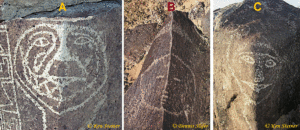
Figure 42: Comparing two typical Mogollon masks (A and C) with a Rio Grande Style mask (B). A and C: Petroglyphs from Three Rivers. Photographs © by Ken Steiner. B: Petroglyph from Piedras Marcadas (notice the enhanced rock edge and the 3D triangular shape further up). Photograph © by Dennis Slifer
Importantly, the rock art site of Cerro Indio (in the contact zone about 130 km NNW of Three Rivers) has a mixture of Mogollon and Rio Grande Style masks and of the seven (to possibly eleven) petroglyphs of 3D masks, at least three examples have basic Mogollon characteristics. The others are simple, mainly circular Rio Grande Style masks. This mixture is not unexpected in the contact zone between the Mogollon and Anasazi. But as far as I know, no other site further north has Mogollon Style 3D masks, although very rarely some sites do have 2D Mogollon masks (like the example at Arroyo Garcia) or other Mogollon Style figures (like the possible “Tlaloc” petroglyphs at La Cieneguilla). My conclusion therefore is that it is most likely that (only?) at Three Rivers one or more petroglyph manufacturers intentionally created several petroglyphs of 3D masks on rock corners for the first time. This practice then diffused via the contact zone to the Anasazi Territory either by Mogollon people who travelled north or by Pueblo people who visited Three Rivers (or by both).
THE MEANING OF THE 3D MASKS
It is a fact that in general ancient peoples were intrigued by rocks, rock formations and often also by natural rock features like cracks, holes and projections. Rocks are considered by prehistoric peoples to be imbued with supernatural power and thus considered to be sacred. Perhaps for those reasons rock surfaces and natural features on it were thought of to represent entrances into the spirit world and even means of communication. Interestingly, from this study it proved that – especially in New Mexico – rock art manufacturers often incorporated natural rock properties like small holes and projections into their images, but also used rock corners in order to create 3D masks. An important question now is: what was the function of those 3D masks?
In a speculative attempt to answer this question I now return to the situation at Three Rivers, to be more precise, to the 3D gallery at Three Rivers West, where four 3D masks are found very close together. Apparently their location in this very small area is highly premeditated. Importantly, all four masks face in more or less different directions (as do the other 3D masks at Three Rivers), which in my opinion is evidence that one specific bearing was not favoured by the prehistoric manufacturers. For that reason it is impossible to observe the complete 3D masks in the gallery at Three Rivers West all at the same time. In most cases the observer sees only halves and perhaps one mask in full and the observer has to move around in this gallery of masks to appreciate each mask fully complete. Polly Schaafsma (referring only to three examples, though) argued that “Their position at the top of the column serves to anthropomorphize the entire column, which is perhaps the effect intended” (2001: 211). Although I unquestionably agree with Schaafsma’s hypothesis, it must be pointed out that her remark only applies to the three monoliths at Three Rivers West. Her hypothesis might also apply to one monolith at Three Rivers North (see Figure 15: leftmost, bottom row) and perhaps also to the enormous 3D mask at Three Rivers Mid (see Figure 18), although those two masks – and all the other 3D masks at Three Rivers – are not exactly placed at the top of the stone, or appear on smaller boulders or outcrops. A small number of masks even face upwards. Therefore I would like to put forward an additional rationale to further explain the manufacture of 3D masks at Three Rivers; an explanation that confirms and strengthens the hypothesis articulated by Polly Schaafsma.
In my opinion the practice to fold a petroglyph of a mask symmetrically across two adjacent panels, in such a specific way that each eye looks in a different direction, is highly intentional. I now argue that especially this diverging view was aimed for, as – when illuminated in a specific way – a dark and a light half was created. The “dark” eye may have been considered to look into the underworld spirit world, while the “light” eye simultaneously observed the mundane world (or vice versa?). The 3D mask thus created a “bridge” between those two worlds. Illuminated in this way the 3D masks also are ultimate symbols of duality and thus comparable with the masked/unmasked duality in the ritual Kachina performances.
Importantly, the small gallery at Three Rivers West – containing four 3D masks facing in several directions – perhaps always provided at least one clear example of a mask that expressed duality (a dark and a light half). However, my hypothesis applies to all 3D mask petroglyphs at Three Rivers; not only to the examples on vertical monoliths. Concluding, Schaafsma justifiably suggested that the monoliths at Three Rivers West were anthropomorphised by manufacturing the mask on top of the monolith, while additionally I argue that the highly intentional 3D character added the concept of bridging two worlds, simultaneously expressing the concept of duality. Instantaneously, boulders and outcrops decorated with 3D (and 2D!) masks were – in general – conceived as animated portals by ancient visitors. Differently put, by adding the 3D masks those natural stone columns were transformed – also by the shifting rays of the sun – into communicating performers upon the arena of this sacred site. In this respect it is also important that the prominent rocky ridge of Three Rivers is recognisable from far and easily accessible. It therefore most likely was a public site, destined to convey massages of all kinds and on multiple levels.
It is now possible that this imaginable concept originated (only?) at Three Rivers and eventually travelled north, but – as always – it is uncertain whether concept and practice travelled as a team. The original Three Rivers meaning – whatever it was – of the 3D mask may eventually have been lost and may have been replaced by the Pueblo Kachina concept when travelling north. Importantly, also the practice to use other rock features in association with images, such as holes or projections, may also have travelled northwards. However, the fact that the Kachina masks of the Pueblos only functioned when the eyes are painted and cut out may also have independently triggered the use of natural holes for eyes in Rio Grande Style rock art (see for instance Figure 34).
Although especially Polly Schaafsma argues that Mogollon masks preceded the appearance of Kachinas among the Pueblos, in this respect it must be emphasised that it is still unknown whether the Mogollon conceived their 3D (and 2D) masks exactly the same way the Pueblos conceived their Kachinas. However, the very essence of the 3D masks at Three Rivers may well have been the combined concepts of transformation, duality and communication and in this respect a Kachinas mask formulated the same group of concepts.
CONCLUSIONS
This study focussed on the manufacture of 3D masks intentional placed on rock corners in New Mexico rock art. First it has been attempted to demonstrate the rather intriguing distribution of the 3D mask across New Mexico. Remarkably, one rock art site in the Mogollon area, Three Rivers, proved to have the biggest concentration of 3D masks of New Mexico. All other rock art sites with 3D masks discussed in this study are found in Anasazi Territory. It is therefore almost certain that the practice to manufacture 3D masks diffused from Three Rivers via the contact zone to the Anasazi Territory where its function was transformed into the Pueblo Kachina rituals. In addition to the hypothesis postulated by Polly Schaafsma that several monoliths at Three Rivers were anthropomorphised by those 3D masks, I argue that the 3D mask at Three Rivers were intentionally placed on rock corners to express transformation, duality and communication. They were perhaps a visual means to bridge two worlds.
REFERENCES
Berrier M. 2013. Variation and Distribution of Goggle-eyed Anthropomorphic Figures from Southern New Mexico, West Texas and Northern Mexico, unpublished manuscript for presentation given at the 2013 IFRAO symposium, Albuquerque, New Mexico, Available only as PDF at Academia.
Berrier M. 2018. Rock Art Recording at the Broad Canyon, New Mexico LA 69645 (Summary). Doña Ana Archaeological Society Rock Art Recording Team; Project # 05-008.
Berrier M. 2019. Ceremonial Depictions of Bighorn Sheep Anthropomorphs in the Jornada Mogollon Region, 20th Annual Proceedings of the Jornada Mogollon Conference edited by George O. Maloof, El Paso Museum of Archaeology, El Paso, Texas, 2019, pp. 155-184.
Duran M.S., Crotty H.K. 1999. Three Rivers Petroglyph Site: Results of the ASNM Rock Art Recording Field School, The Artifact, vol. 37-2, El Paso Archaeological Society, El Paso, Texas, Special Publication No. 2, Archaeological Society of New Mexico, Albuquerque, New Mexico. Human Systems Research Report No. 9301, Tularosa.
Kline H. 2012. Three Rivers as Transitional Zone: Considering a Collective Metanarrative in Pueblo Prehistory, Thesis, The University of New Mexico, Albuquerque, New Mexico.
Markman R.H., Markman P.T. 1989. Masks of the Spirit: Image and Metaphor in Mesoamerica, Berkeley: University of California Press.
Schaafsma P. 1975. Rock Art in the Cochiti Reservoir District, Museum of New Mexico Papers, Anthropology, vol. 16, Santa Fe.
Schaafsma P. 1992. Rock Art in New Mexico, Museum of New Mexico Press.
Schaafsma P. 2001 (1980). Indian Rock Art of the Southwest, University of New Mexico Press, Albuquerque.
Schaafsma P. 2007. Head Trophies and Scalping: Images in Southwest Rock Art, in Chacon R.J., Dye D.H. (eds.), The Taking and Displaying of Human Body Parts as Trophies by Amerindians, pp. 90-123.
Schaafsma P., Schaafsma C. 1974. Evidence for the Origins of the Pueblo Katchina Cult as Suggested by Southwestern Rock Art, American Antiquity, vol. 39-4, pp. 535-545.
Slifer D. 1998. Signs of Life. Rock art of the Upper Río Grande, Ancient City Press, Santa Fe, New Mexico.
Slifer D. 2000. The serpent and the Sacred Fire. Fertility images in Southwest rock art, Museum of New Mexico Press.
Slifer D. 2007. Kokopelli. The magic, mirth and mischief of an ancient symbol, Salt Lake City, Utah.
Slifer D. , Duffield J. 1994. Kokopelli. Fluteplayer images in rock art, Ancient City Press, Santa Fe, New Mexico.
Van Hoek M. 2007. A re-evaluation of the “monkey” petroglyph at the Quebrada de San Juan, Peru, Rock Art Research, vol.24-2, pp. 255-257, Melbourne, Australia.
Van Hoek M. 2010. Mogollon Rock Art and the Status of the “Flute Player”, in Proceedings of the XV World Congress UISPP, Lisbon. BAR International Series, vol. 35, pp. 161-173, Archaeopress, Publishers of British Archaeological Reports, Oxford, England.
Van Hoek M. 2011. Bogotalla, Perú: How the three-dimensionality of a boulder may explain the occurrence of two-dimensional petroglyphs on that rock, Rupestreweb, <online http://www.rupestreweb.info/bogotalla.htmlglt;.
Van Hoek M. 2017. “Petroglifos” Aviformes Tridimensionales, TRACCE Online Rock Art Bulletin, 42, December 2017, <online http://www.rupestre.net/tracce/?p=12611>.
Van Hoek M. 2018a. The Huacapongo Corridor – Rock Art along a Prehistoric Coastal Route in the Desert Andes, Oisterwijk, Holland.
Van Hoek M. 2018b. Possible Indications for Long Distance Diffusion of Rock Art Motifs in the Americas, TRACCE Online Rock Art Bulletin, 43, September 2018, <online http://www.rupestre.net/tracce/?p= 12805>.
Van Hoek M. 2019. The Incomplete Versus The Unfinished: Invisible Objects in Desert Andes Rock Art?, TRACCE Online Rock Art Bulletin, 43, July 2019, <online http://www.rupestre.net/tracce/?p= 13273>.
Van Hoek M 2020a. The Book of Los Boliches. A Petroglyph Site in Northern Peru, Oisterwijk, Holland.
Van Hoek M. 2020b. The Book of Janus. Polycephalic Creatures in Rock Art, Oisterwijk, Holland.
Wright B. 2008. Hopi Kachinas: a Life Force, in Hopi Nation: Essays on Indigenous Art, Culture, History, and Law, University of Nebraska, Lincoln, chapter 4, pp. 111-121.
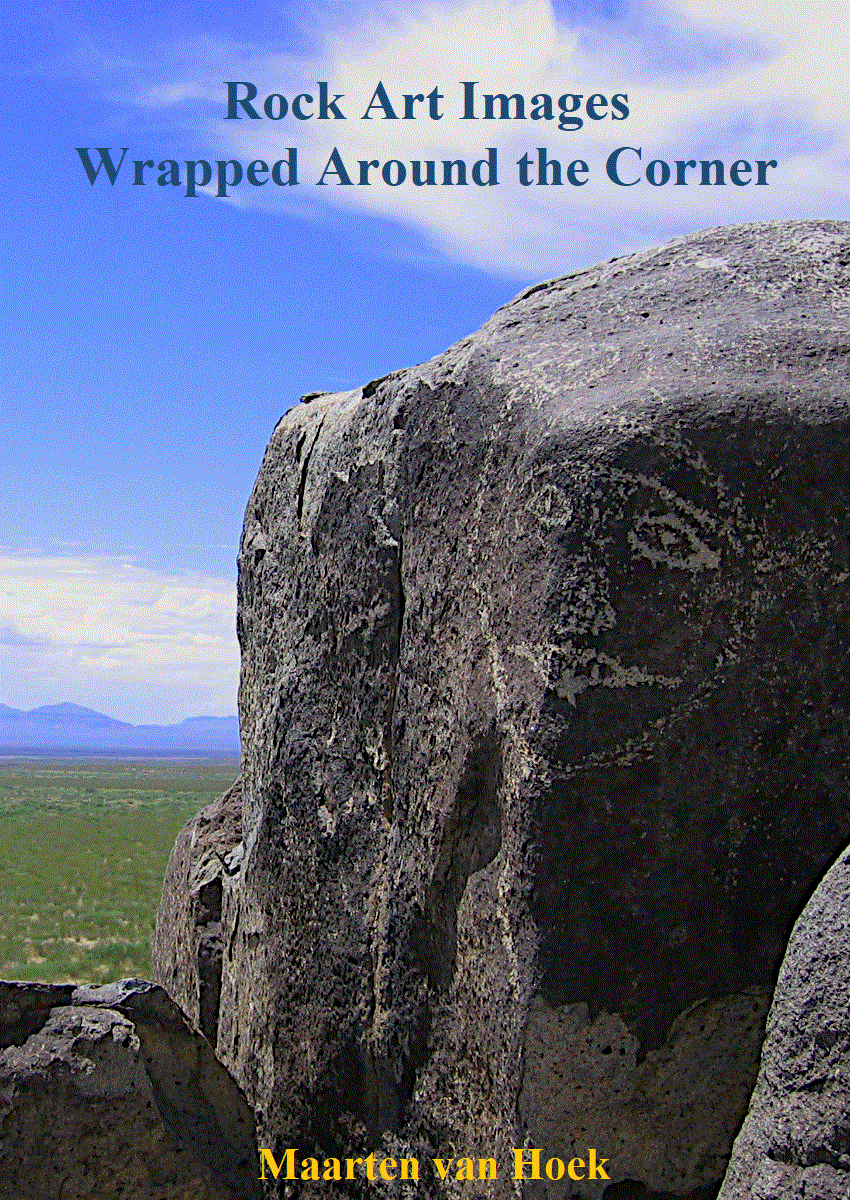
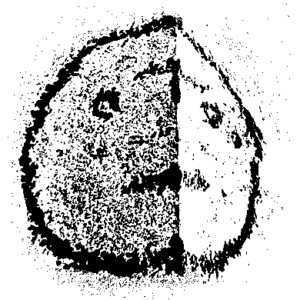

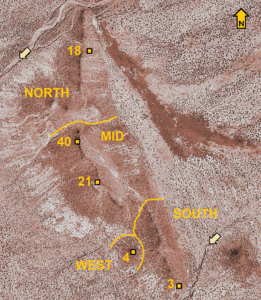
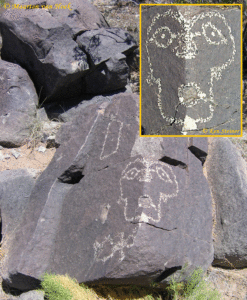
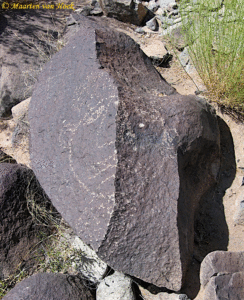
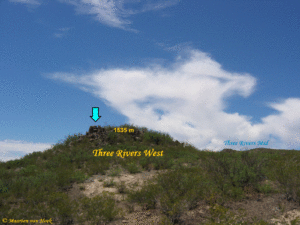
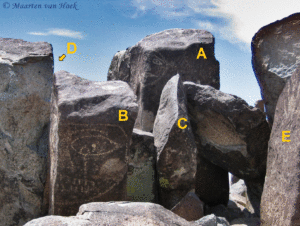
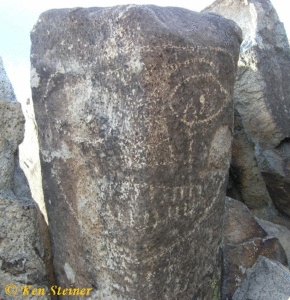
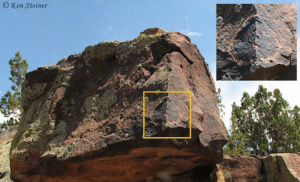
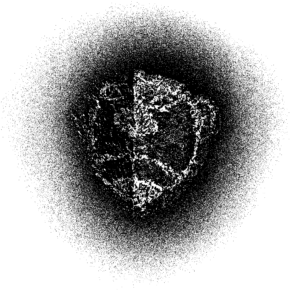
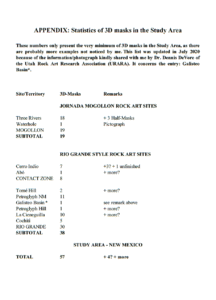














There is a 3-D mask on a rock on Gabriola Island in British Columbia, Canada. I believe I have a rubbing of it. It occurs at a spectacular ‘birthing site’ which features a 6’X8′ rocks with large carvings. On rock 6’X8′, is 4 feet high, and allows a person to lie on top of it prone, comfortably. (Possible birthing profile!)
Hans Martin, Ph.D.
Dear Dr Martin,
Indeed, you are right. Thanks for notifying me. A drawing of the 3D mask can be found in the work by Amanda Shea Adams 2003 Visions Cast on Stone – Thesis